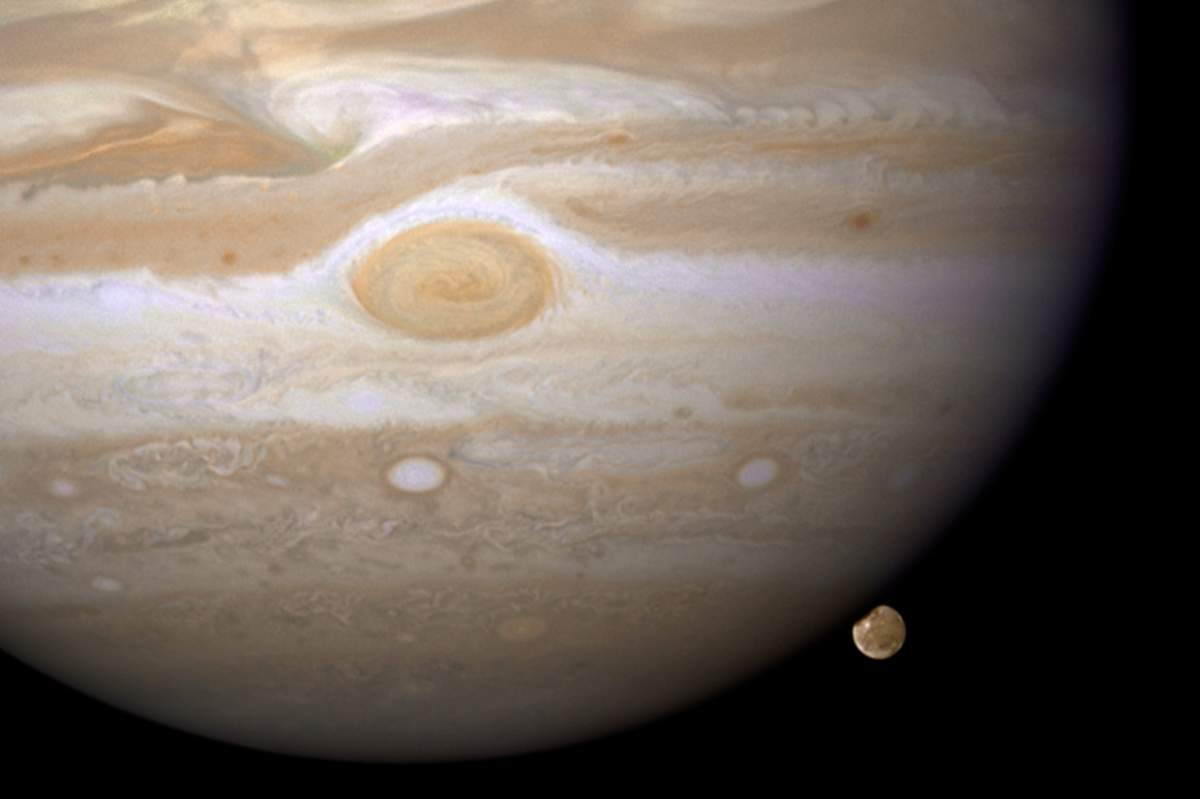
Ganymede's Beach
NASA thinks it has found a moon with a subterranean salt-water ocean.
And this time it's not on Europa. It's on Ganymede, Jupiter's largest moon!
They made this discovery using the Hubble Space Telescope, which, interestingly enough, can't see underwater.
Therefore, they had to do some complicated measurements. Ganymede is the only moon in our solar system with a magnetic field. The field creates glowing electrified gas called the aurora--aurora borealis here on Earth--which the telescope can see. Because Ganymede's orbit is very close to Jupiter, its field interacts with Jupiter's magnetic field. When Jupiter's magnetic field changes, the aurora on Ganymede also change, shifting back and forth.
In the Second Degree
If Ganymede had a saltwater ocean, its interaction with Jupiter would create a secondary magnetic field in the ocean to counter Jupiter's field. This "magnetic friction" would keep Ganymede's aurora from shifting as dramatically.
Presumably, they have calculated the aurora movement without an ocean.
If Ganymede had no ocean, they would expect about a six degree fluctuation in the aurora movement. Using the telescope to make measurements, they've discovered that the shift is only two degrees. As a matter of fact, they think the subterranean ocean could be 60 miles thick, 10 times deeper than Earth's oceans. Unfortunately, it's buried under about 95 miles of icy crust.
Read More:
"The Search for a Subsurface Ocean in Ganymede with Hubble Space Telescope Observations of its Auroral Ovals" (Journal of Geophysical Research)









